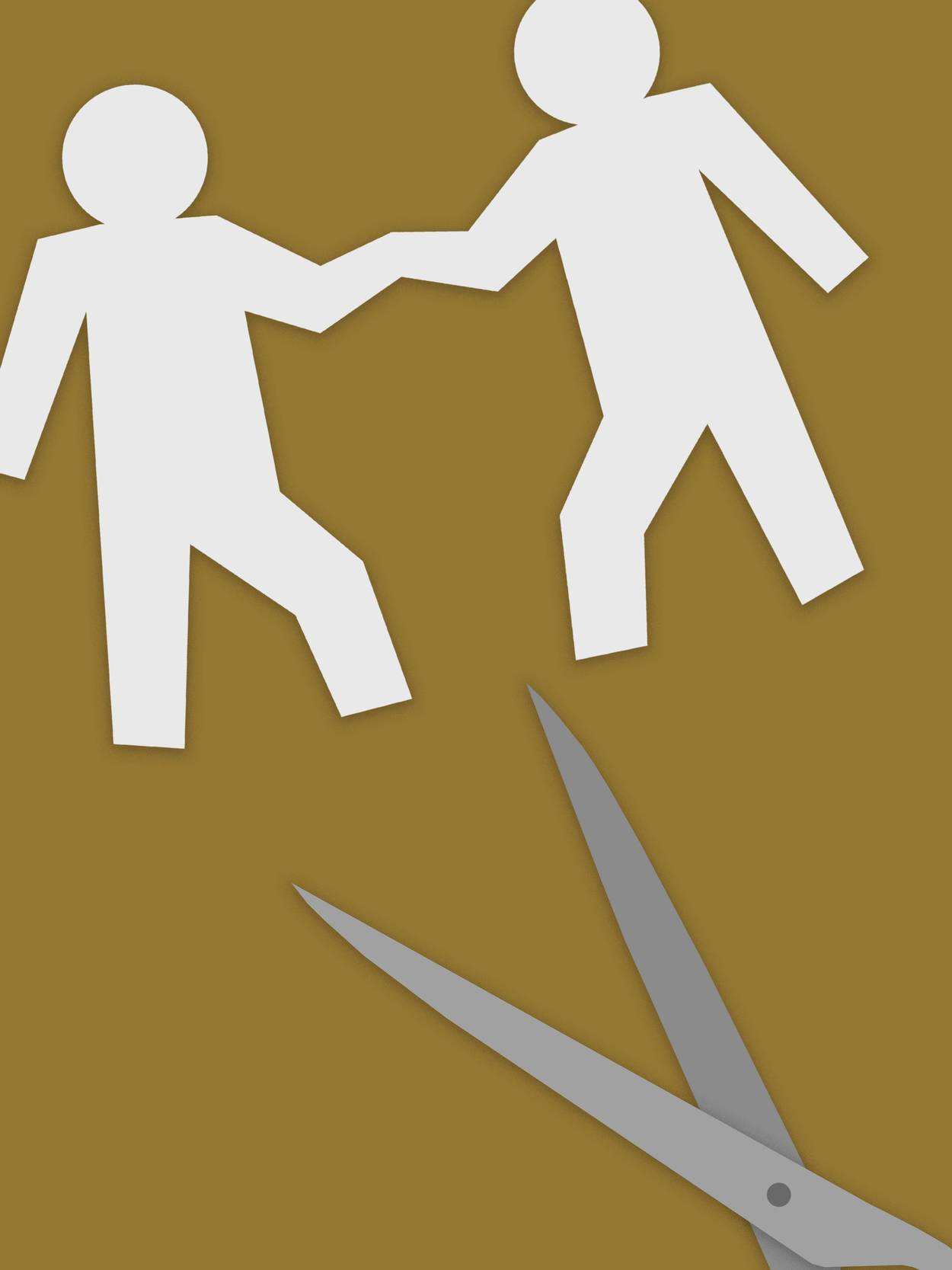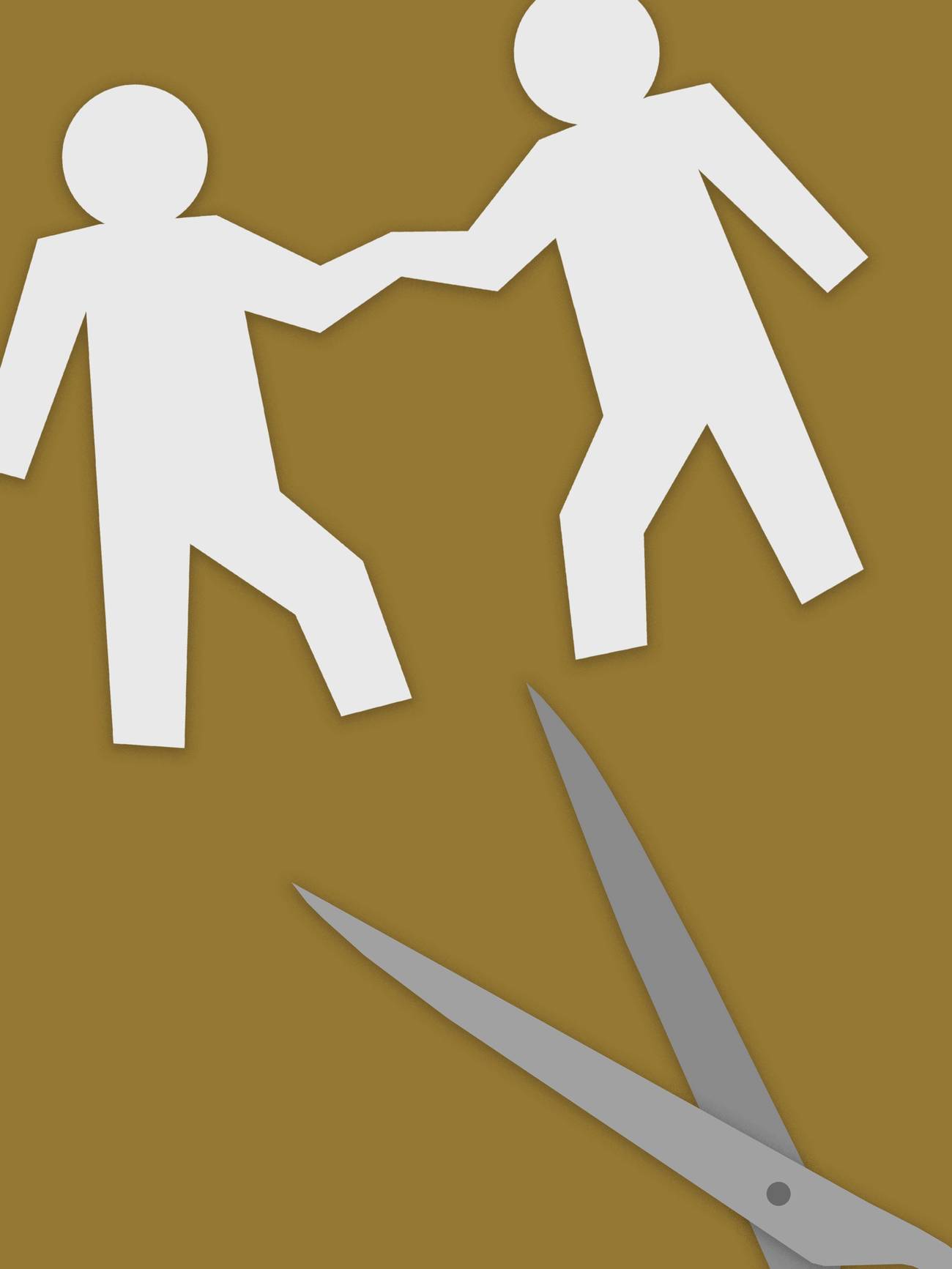Conflict Theory Doesn’t Like You
Where does critical race theory come from? An older thesis that flattens all human experience into an unrelenting state of war.




Thankfully, not every idea or theory that begins in the academy breaks through to the mainstream. For instance, my own discipline of sociology has four major theoretical pillars—structural functionalism, symbolic interactionism, feminism, and conflict theory. The only one out of the four that has achieved any real degree of larger public recognition is feminism. As such, it might surprise some readers to know that, right up there with feminism in terms of its popular influence, is conflict theory. If you’re wondering how such a claim could be true, consider conflict theory’s intellectual kin: critical race theory and intersectionality.
Critical race theory asserts that race and racism are always linked. Moreover, it holds that race will always be about inequality between groups and the domination of one group by another. The correct response, in this line of thinking, is to always view the world of social problems in general, and racial disparities in particular, through the prism of race and racism. In fact, the theory proposes that solutions that aren’t explicitly race-conscious are themselves little more than a tool to maintain the dominance of whites over people of color.
Intersectionality, another intellectual relative of conflict theory, is neck and neck with critical race theory in its recent leap into mainstream popularity. Intersectionality or intersectional theory focuses on the way individuals and groups experience oppression based on multiple aspects of their identity. In other words, a Black woman’s experience of oppression can neither be grouped in with women’s or Blacks’ experiences more generally and is its own unique reality. While race is clearly an important component, intersectionality also considers gender, sexual orientation, gender identity, religion, ability status, and other dimensions along which oppression is understood to occur.
Some have argued that this framework has resulted in a bizarre tiered status system where the more oppressed identities one can claim, the better. Coleman Hughes described for Quillette magazine how this dynamic played out on Columbia University’s campus:
[Intersectionality] operates as a master formula by which social status is doled out. Being Black and queer is better than just being Black or queer, being Muslim and gender non-binary is better than being either one on its own, and so forth. By ‘better,’ I mean that people are more excited to meet you, you’re spoken of more highly behind your back, and your friends enjoy an elevated social status for being associated with you.
Although critical race theory and intersectionality differ in important ways, both perspectives developed and grew over decades inside the academy and both originated in conflict theory, which itself originated in the work of Karl Marx, who asserted that a condition of perpetual class conflict is the inevitable result of competition over scarce resources. In The Communist Manifesto, Marx and Engels wrote, “Freeman and slave, patrician and plebeian, lord and serf, guild-master and journeyman, in a word, oppressor and oppressed, stood in constant opposition to one another, carried on an uninterrupted, now hidden, now open fight, a fight that each time ended, either in a revolutionary reconstitution of society at large, or in the common ruin of the contending classes.” (emphasis added) In Marx’s and Engels’ view, the dynamic of “oppressed” and “oppressors” had not only been present throughout most of history, but it explained the vast majority of contemporary human misery.
Marx’s original work focused on conflict between the proletariat, the working class, and the bourgeois, the owners of the means of production. While this class dynamic captured Marx’s attention, Italian Marxist philosopher Antonio Gramsci built on Marx’s original theory in a way that may look more familiar. In his famous work The Prison Notebooks, Gramsci wrote, “The marginalized groups of history include not only the economically oppressed, but also women, racial minorities and many ‘criminals.’”
Thus, Gramsci expanded Marx’s narrow framing of economic classes to the world of identity groups. Further still, Gramsci argued that power was maintained through the control of a set of values and norms that benefited the ruling or powerful groups—something he called “cultural hegemony.” With Gramsci’s emphasis on ideology and his switch from class to race, we start to see the silhouette of critical race theory. And by further broadening class to include an even wider range of identity groups that can claim oppressed status, we begin to see the contours of intersectionality.
The common origin brings into focus the shared worldview—one that takes as a matter of first principle that battles for power and domination between groups drive disparities and inequality. By extension, this worldview implies that, when individual-level interactions between members of different racial, ethnic, etc. groups—and political scientists tell us that the number of groups into which human beings can divide themselves is theoretically infinite—go sideways, it’s because of that same quest for domination.
To be sure, paying attention to the power dynamics that shape interactions and inequality is a step forward in our understanding of societal problems and inequality. The privileges that come with power are real and can be significant and concerning.
However, two side effects have emerged from the hegemony, to use Gramsci’s word, of this worldview. One is that conflict theory—and, by extension, critical race theory and intersectional theory—looks into the room of social problems and shines a giant spotlight on a single aspect of the human condition, yet leaves the rest of the room dark. With the light of insight shining on this one spot, we’re led to believe that all that matters for understanding human misery is recognizing the endless struggle for power between, as Marx and Engels put it, the “oppressor and oppressed”—on whatever axis that binary is construed. But where does that leave everything else that makes up the human experience?
What started out as a helpful tool—thinking about the importance of power and power dynamics, or racial prejudice or bias—is used to flatten and then to do away with all of the richness in the human experience.
Consider an interaction between two people in an elevator, one white and the other Black. They are both going up, but the Black passenger gets on at the third floor while the white passenger got on at the second floor. Let’s say the Black passenger greets the white passenger when she gets on the elevator and the white passenger doesn’t reply. Does the white passenger remain silent because the other passenger is Black and, as such, the white passenger feels that she doesn’t need to respond? It’s certainly possible.
But couldn’t there also be a wide range of other explanations that have nothing whatsoever to do with race or power? Might the white passenger be painfully shy, claustrophobic, having a bad day, or simply be lost in thought? Maybe she’d had a recent death in the family, or maybe she was thinking about a date she’d had the night before? If these alternative explanations sound farfetched, that’s the point. The range of experiences that make up the human condition—like the number of “groups” into which humans can divide themselves or be divided by others—is functionally infinite.
Yet, under conflict theory, alternative explanations are thrown out. They violate the first principle—that power dynamics over race are always the primary motivating factor. Just like that, what started out as a helpful tool—thinking about the importance of power and power dynamics, or racial prejudice or bias—is used to flatten and then to do away with all of the richness in the human experience. As a result, do we now understand more about what happened, or less?
Conflict theory, and its intellectual relatives, reduces us to no more and no less than the identity groups to which we belong—which are bizarrely held to be immutable yet in fact are socially constructed and always changing. And it then tells us that all of our interactions are derivations of that basic fact.
We’re left with the second unintended side effect of conflict theory and its derivatives: When every interaction is about power and the privilege that comes with it, conflict theory tells us that words—as our primary mechanism of communication—are the instrument of enforcing and maintaining the status quo. So, under critical race theory and intersectionality, we’re in a coiled position where our alertness to power dynamics is turned up as high as it can possibly go. We’re ready to spring.
This is the space where expressions like “blind spot,” “on the one hand,” “peanut gallery,” and “savage” cease to be acceptable. Once again, what started out as a useful tool for understanding the world—thinking seriously about the role of language in society and knowledge along with a serious consideration of the words we use—expands in a way that becomes unreasonable to many. Once these terms are deemed unacceptable, the people who continue to use them, especially after they’ve had their oppressive etymology explained to them, are symbolically flagged as noncompliant. Worse still, excising these words from our vernacular somehow gets passed off for real change or real progress. Yet when every interaction about power and language is the instrument to maintain that power, these outcomes are preordained.
The most damaging effect of conflict theory may be the way it flattens the human experience and promotes an unrelenting view of interactions and inequality as being the inevitable outcome of individuals and groups vying for power in the context of scarce resources. Close behind this flattening is the damage done by the overinflated focus on the minutiae of the slightest verbal noncompliance, which magnifies misunderstandings and hurts and elevates extreme forms of hypersensitivity as an engine of progress.
These two mainstream perspectives that flowed outward from conflict theory have come to dominate much of our national conversation in a way that promotes an extremely narrow understanding of the human experience. The upshot is a view of the world that is psychologically rigid and incapable of considering alternative explanations or of parsing nuance.
The problem isn’t just that the theory is too one-dimensional to fit reality, which it is. It’s that it insists that an unending state of warfare is the lens through which we are obliged to view both the smallest everyday interactions as well as the entirety of the human experience. While this may at times be a revealing academic exercise, it is hard to see how it is likely to expand the sum of human understanding or happiness when applied as a rule for living with others.
Ilana Redstone is a professor of sociology at the University of Illinois Urbana-Champaign and a Founding Faculty Fellow at UATX. She is the founder of Diverse Perspectives Consulting and the Faculty Director of The Mill Institute. She is the co-author of Unassailable Ideas: How Unwritten Rules and Social Media Shape Discourse in American Higher Education and the creator of the Beyond Bigots and Snowflakes video series.